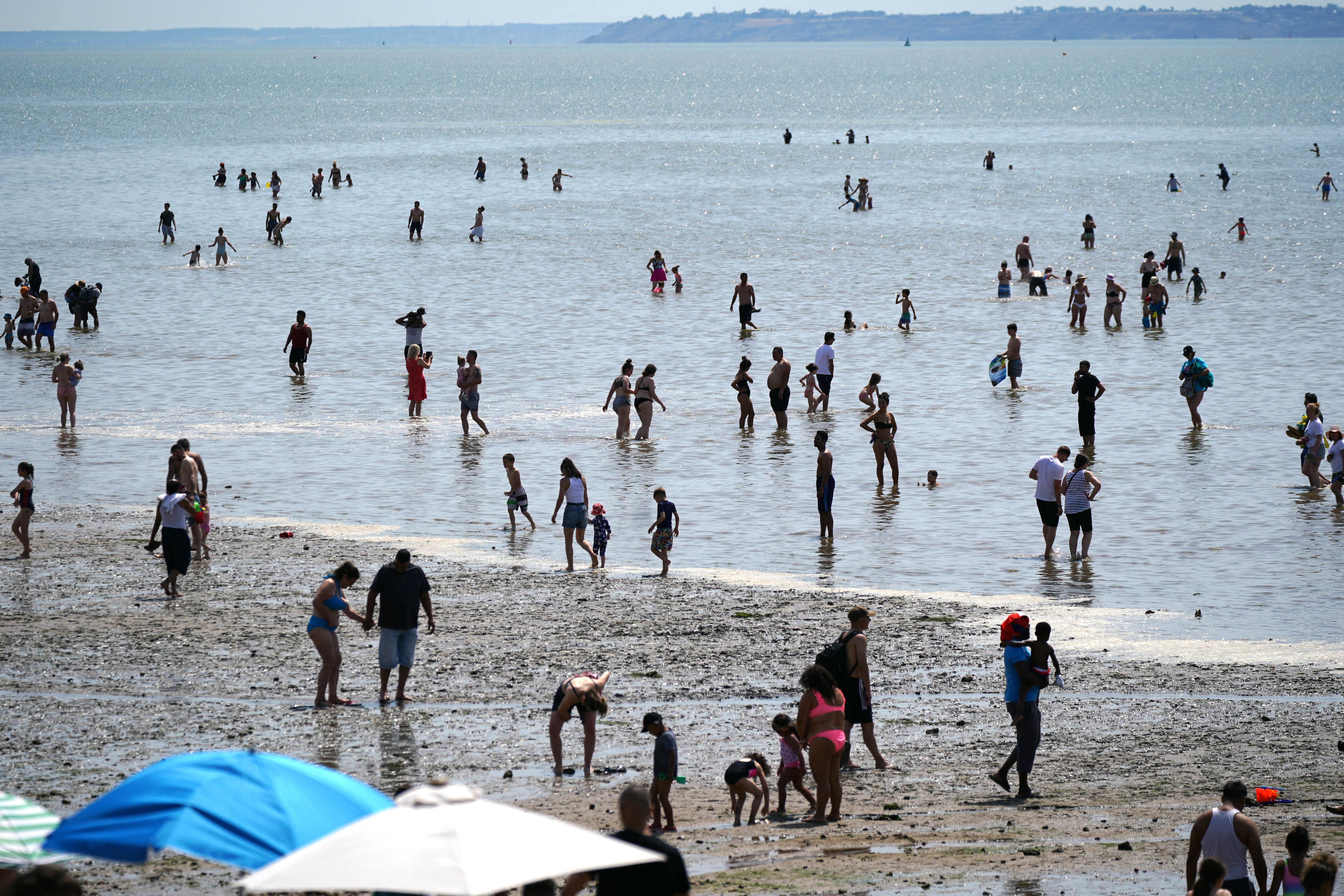Figures show 97% of England’s bathing waters met water quality standards in 2022
A dozen sites – including both designated inland river swimming spots – failed to meet the grade and got a ‘poor’ rating.

Your support helps us to tell the story
From reproductive rights to climate change to Big Tech, The Independent is on the ground when the story is developing. Whether it's investigating the financials of Elon Musk's pro-Trump PAC or producing our latest documentary, 'The A Word', which shines a light on the American women fighting for reproductive rights, we know how important it is to parse out the facts from the messaging.
At such a critical moment in US history, we need reporters on the ground. Your donation allows us to keep sending journalists to speak to both sides of the story.
The Independent is trusted by Americans across the entire political spectrum. And unlike many other quality news outlets, we choose not to lock Americans out of our reporting and analysis with paywalls. We believe quality journalism should be available to everyone, paid for by those who can afford it.
Your support makes all the difference.Just over 97% of England’s designated bathing sites met minimum standards in 2022 – down slightly on the previous year, figures show.
A dozen sites, including the country’s only two inland rivers that are designated as bathing waters, failed to meet the grade in testing for bacterial water pollution by the Environment Agency.
Just over 72% of beaches and inland water sites met the “excellent” standard – the highest since stringent new requirements were introduced in 2015, and up from 70.7% last year.
In total, just under 93% were either excellent or good, and 4% were classed as “sufficient”.
In most places it is now better than it has been for many years, but there is much more to be done to ensure cleaner and healthier waters for people to enjoy
In total, 97.1% of the more than 400 monitored beaches and inland bathing sites achieved at least minimum water quality levels, compared with 99% meeting the required standards in 2021.
The quality of bathing water has become a hot topic, amid concerns about the frequency with which water companies dump untreated or not properly treated sewage into rivers and coastal waters and reports that the Environment Agency is reducing testing at designated swimming spots.
The Environment Agency (EA) said up to 20 samples are taken from each site during the bathing season, tested for bacteria – specifically E coli and intestinal enterococci – that can be harmful to health.
Since 2015, the EA has required water companies to install monitors at bathing water sites, which capture data on the frequency and duration of storm overflow discharges – when sewage is released untreated into the environment to stop drains overflowing in heavy rainfall.
The agency said the data was published online so the public could see it, and more than 12,000 of England’s 15,000 storm overflows have monitors installed, with the remaining 3,000 fitted by the end of next year.
Environment Agency chair Alan Lovell said: “Public confidence in our bathing waters is key to the tourism industry as well as people’s health and wellbeing.
“Overall, bathing water quality has improved massively over the last decade due to targeted and robust regulation from the Environment Agency and the work carried out by others.
“In most places it is now better than it has been for many years, but there is much more to be done to ensure cleaner and healthier waters for people to enjoy.
“We know that improvements can take time and investment from the water industry, farmers and local communities, but where the investment is made, standards can improve.”
Water minister Rebecca Pow said: “I welcome the good news that more bathing waters than ever have met the highest standard of excellent at just over 72% of all our bathing waters – an increase from last year – but there is more to be done to improve our bathing waters and we must not rest on our laurels.
“That is why we are going further and faster than any other government to protect and enhance these precious sites.
“We have brought in strict targets to protect our bathing waters and new rules to crack down on water pollution will require water companies to deliver a £56 billion infrastructure improvement programme – the largest in their history.”
The 12 tested sites which received a “poor” rating include Scarborough South Bay, North Yorkshire, Bognor Regis (Aldwick) in West Sussex, and Blackpool North, Lancashire.
England’s two inland river swimming sites are the Wharfe at Cromwheel, Ilkley, West Yorkshire, and Wolvercote Mill Stream, north of Port Meadow in Oxford.